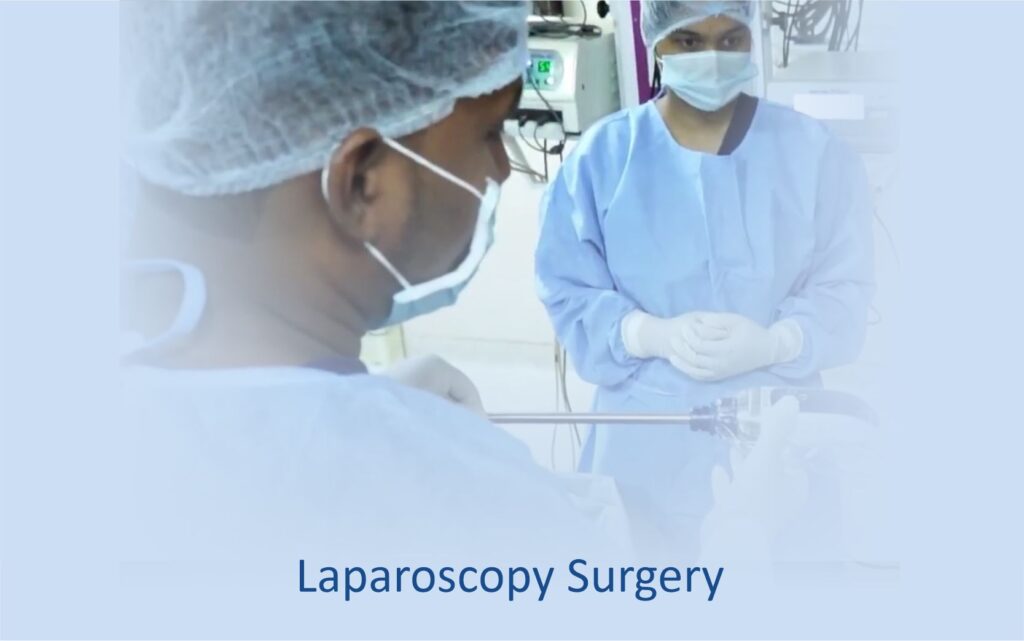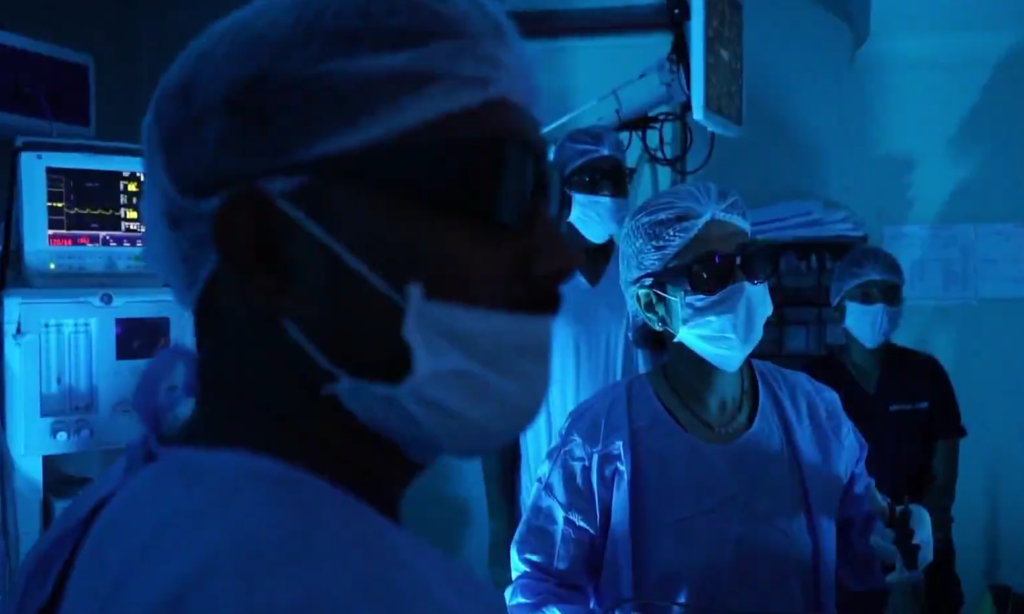Laparoscopy Surgery

What is Laparoscopy (Keyhole Surgery)?
Laparoscopy, also known as keyhole surgery, is a minimally invasive surgical procedure used for diagnosing and treating various fertility-related conditions. It involves making small incisions in the abdomen to insert a laparoscope (a thin tube with a camera) and surgical instruments. This allows doctors to examine and operate on the reproductive organs without the need for open surgery.
Laparoscopy is commonly used in fertility treatments to diagnose and treat conditions such as endometriosis, ovarian cysts, fibroids, tubal blockages, and adhesions. It helps improve fertility outcomes by correcting structural abnormalities in the reproductive system.
When is it the right time to Laparoscopy Surgery?
- Unexplained infertility after unsuccessful fertility treatments
- Chronic pelvic pain or suspected endometriosis
- Recurrent miscarriages due to uterine abnormalities
- Suspected tubal blockage detected in HSG (hysterosalpingography)
- Pelvic inflammatory disease
- Ectopic pregnancy
- Ovarian cysts
- Uterine fibroids
What are the stages of Laparoscopy treatment?
- Preparation: The patient is given general anesthesia.
- Incision & Scope Insertion: A small incision is made in the abdomen, and a laparoscope is inserted to visualize internal structures.
- Gas Inflation: The abdomen is inflated with carbon dioxide to create space for better visibility.
- Diagnosis & Treatment: The surgeon examines the reproductive organs and, if necessary, removes or corrects abnormalities.
- Closure & Recovery: The instruments are removed, and incisions are closed with stitches.
What are the types of Laproscopy Treatments?
- 3D laparoscopy
- Laparoscopic Hysterectomy
- Laparoscopic Myomectomy
- Laparoscopic cystectomy
- Diagnostic Laparoscopy
- Laparoscopic sling surgeries
- Laparoscopic sacrocolpopexy
- Laparoscopic Burch colposuspention for stress urinary incontinence
- Hysterolaparoscopy (Hysterosalpingoscopy)
- Operative Hysteroscopy
- Hysteroscopic Metroplasty
- Hysteroscopic septal resection
- Hysteroscopic adhediolysis for Asherman syndrome and thin endometrium
- PRP and stem cell therapy
Benefits of Laparoscopy
Panacea Fertility Center offers a ray of hope for couples experiencing infertility.
Some of the key benefits of Laparoscopy include:
- Minimally invasive: Smaller incisions result in reduced pain and quicker recovery compared to traditional open surgery.
- Shorter hospital stay: Many procedures can be performed on a same-day discharge basis.
- Greater precision: Improved visualization of internal organs allows for more accurate diagnosis and treatment.
- Less scarring: The use of smaller incisions leads to minimal visible scarring.

Possible Side Effects and Considerations for Laparoscopy
Laparoscopy is a safe and minimally invasive procedure, but like any surgery, it carries some risks. Possible complications include bleeding, infection, or injury to nearby organs such as the bladder or bowel. Some patients may experience discomfort from the gas used during the procedure, as well as mild pain or bruising around the incision sites. In rare cases, there may be adverse reactions to anesthesia, blood clots, or the need to switch to open surgery if complications arise. However, with proper care, most patients recover quickly and without issues.
Happy Couples
EXCELLENT rating
Based on 12 reviewsTrustindex verifies that the original source of the review is Google. All staff is great, hospital cleaning excellent, thank for Panacea staff.. ❤️Trustindex verifies that the original source of the review is Google. Highly recommendedTrustindex verifies that the original source of the review is Google. Proper guidance and well supported staff.Trustindex verifies that the original source of the review is Google. Best Doctor I saw in 13 years of journey... After Doctor given assurance for child..... Not an single doctor I saw in 13 years who give you confidance you become a parent.... Lots of respect for patients and huminty who don't have child.... She give us Daughter after 13 years can't explain our imotion after got child...... Hats of you Doctor for your great efforts.....Trustindex verifies that the original source of the review is Google. Very good hospital.. Nd help full hospital...Trustindex verifies that the original source of the review is Google. Very good hospital And mam is also very good nd intelligent🥰.....sataff is very helpful.... Must visit for this place🙏... panacea hospital yeola And Nashik..Trustindex verifies that the original source of the review is Google. It is a very nice hospital. And mam is also very good. There is a wonderful hospital for women💯👍





Doctor Suggests
Book Appointment
To get a consultation with Panacea Fertility Expert:
Subscribe Now
Don’t miss our future updates! Get Subscribed Today!

